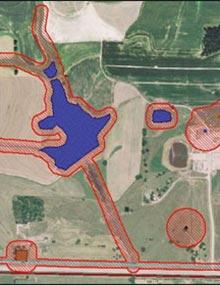

Soil Sampling Hayfields and Row Crops
New
Collecting a representative soil sample is an important step in developing a nutrient plan for your farm. Make smarter management decisions and more efficient use of fertilizer nutrients by learning how to plan and take soil samples from your fields in th
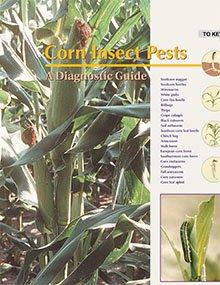
Corn Insect Pests: A Diagnostic Guide
Reviewed
Partial version (736 KB)
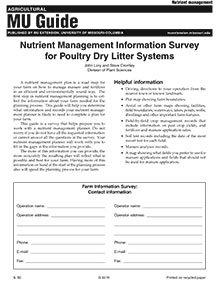
Nutrient Management Information Survey for Poultry Dry Litter Systems
New
A survey tool to help poultry farmers gather essential data for effective nutrient management planning.

Eggplant Production
New
Learn how to grow eggplant. Cultivar selection, planting, fertilizing, staking, harvesting and insect pest management are all covered in this University of Missouri Extension guide.

Preschool Basics: How Children Develop During the Preschool Years
Reviewed
Preschoolers need to learn how to make their own choices. Visit our site for our Preschool Basics: How Children Develop During the Preschool Years resource.

Helping Children Adjust to Divorce: A Guide for Teachers
New
Approximately 51% of divorces in Missouri involves children. Visit our site for our Helping Children Adjust to Divorce: A Guide for Teachers resource.
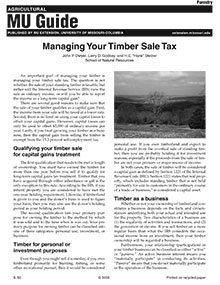
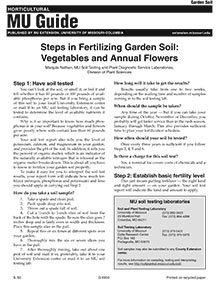
Steps in Fertilizing Garden Soil: Vegetables and Annual Flowers
Revised
Learn how to test soil, apply fertilizers, and maintain nutrient levels for healthy vegetable and flower gardens.
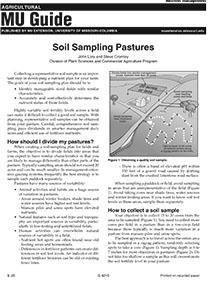
Soil Sampling Pastures
New
Collecting a representative soil sample is an important step in developing a nutrient plan for your farm. The goals of your soil sampling plan should be to

Collecting Genetic Material From Beef Cattle
New
Collect and store genetic samples from beef cattle using blood, hair, or tissue for parentage, trait analysis, and breeding decisions.
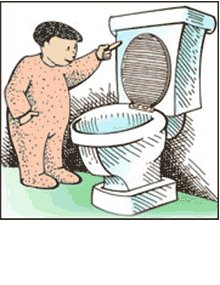
Toilet Training
Reviewed
Learn about effective and patient strategies for toilet training, signs of readiness, and tips for smooth transitions during this important milestone.
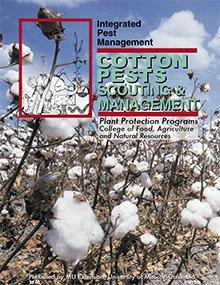
Cotton Pests: Scouting and Management - Page 2
New
Scouting and managing cotton pests in Missouri using IPM practices to minimize economic and environmental costs.
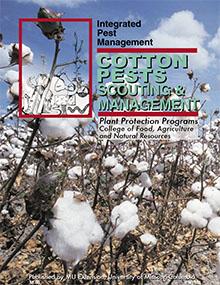
Cotton Pests: Scouting and Management
New
Learn effective scouting and management techniques for cotton pests in Missouri, focusing on plant development and integrated pest management strategies.
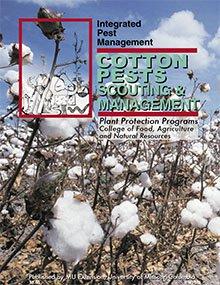
Cotton Pests: Scouting and Management - Page 3
New
Beneficial insects
Honey bees and other insects help pollinate cotton. Cotton is primarily a self-pollinator, but it is partially pollinated by insects.

Pruning and Care of Shade Trees
Reviewed
Most established shade trees do not need to be pruned regularly. But yearly pruning during the first few years after planting can help a tree become established and develop a strong, attractive structure. Learn when and how to prune and problems you might
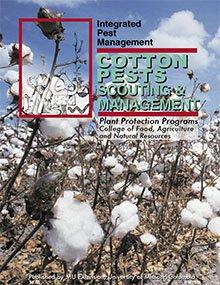
Cotton Pests: Scouting and Management - Page 4
New
Manage cotton pests: identify root‑knot nematode and leaf spot or bacterial blight symptoms, plus crop rotation and control practices.

Subterranean Termites
Revised
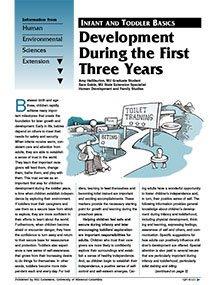
Infant and Toddler Basics: Development During the First Three Years
Reviewed
Infants and toddlers grow up quickly. Visit our site for our Infant and Toddler Basics: Development During the First Three Years resource.
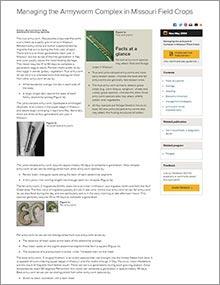
Managing the Armyworm Complex in Missouri Field Crops
New
Learn to identify and manage true, yellowstriped, beet, and fall armyworms in Missouri field crops, including corn, wheat, and pastures
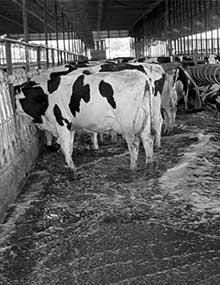
Dairy Manure Management Systems in Missouri
Reviewed
Explore solid, slurry, and lagoon systems for dairy manure management, including storage, nutrient recovery, and environmental protection.
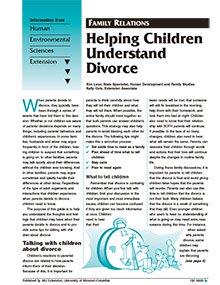
Helping Children Understand Divorce
Revised
Learn strategies for discussing divorce with children, offering reassurance, and addressing their emotional needs during this challenging transition.
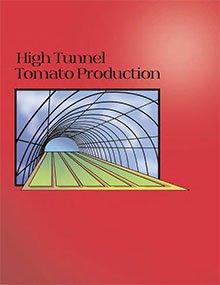
High Tunnel Tomato Production
New
Editor's note
The following abstract describes a publication that is only available as a downloadable PDF.

The Mental Aspects of Performance for Firefighters and Fire Officers (The M.A.P.), Second Edition Manual
New $57
This book helps firefighters and fire officers learn about specific keys to successful performance, goal setting, situation-evaluation training, mental discipline, sensory-enhancement education, and more. It is full of information, skills, exercises, and tools designed to help develop and maintain the psychological and emotional muscles required to sustain long and successful careers.
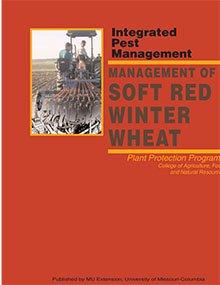
Management of Soft Red Winter Wheat
New
Editor's note
The following abstract describes a publication that is only available as downloadable PDFs by section.
